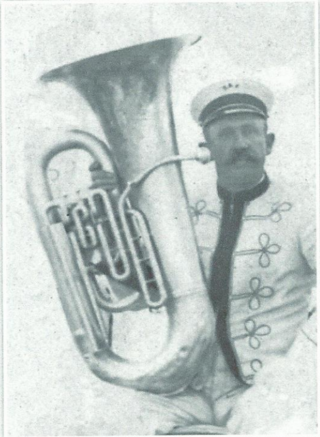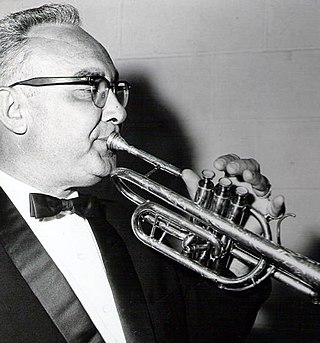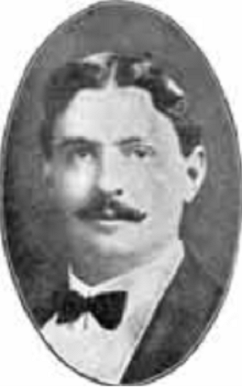This article includes a list of references, related reading, or external links, but its sources remain unclear because it lacks inline citations .(February 2017) |
A screamer is a circus march intended to stir up the audience during the show.
This article includes a list of references, related reading, or external links, but its sources remain unclear because it lacks inline citations .(February 2017) |
A screamer is a circus march intended to stir up the audience during the show.
Screamers were mostly composed in a 60-year period (1895–1955). Circuses were in need of music that would stir the audience into a frenzy, as four-footed animals galloped across the ring. Because march music was a prominent part of American music at that time, and because it carried such a quick tempo, it was this that ringmasters demanded.
Circus marches are faster than a normal military march, often 130 to 150 beats/minute. Although screamers tend to follow the march form, they are often abbreviated, and additions, such as a quick cornet call introduction to a new melody, are included. A typical screamer lasts a minute to three and a half minutes.
Screamers are a very demanding type of music, due to their extremely fast and advanced rhythms, especially the low-brass parts. Double and even triple tonguing is often required in order to play these rhythms. The trio in "The Melody Shop" is a good example of this. [2] Many screamers have two prominent melodies playing at once. Although this is not unusual in a march, screamers tend to go further with this. The low-brass section can be playing a long, stately melody, while the woodwinds can be moving along with a phrase of 16th notes, or vice versa. Due to the circumstances in which screamers are played, dynamics tend to stay at a level forte. Unlike some military marches, piano is rarely used.
Composers of screamers included Karl L. King, whose work included "Barnum & Bailey's Favorite", Fred Jewell and Henry Fillmore. John Philip Sousa wrote "On Parade" and a few others, but his writing in the circus march style is not highly regarded. [3]

Henry Fillmore was an American musician, composer, publisher, and bandleader, best known for his many marches and screamers, a few of which he wrote for the Band of the Hour at the University of Miami in Coral Gables, Florida.

American march music is march music written and/or performed in the United States. Its origins are those of European composers borrowing from the military music of the Ottoman Empire in place there from the 16th century. The American genre developed after the British model during the colonial and Revolutionary periods, then later as military ceremonials and for civilian entertainment events.

Karl L. King was a United States march music bandmaster and composer. He is best known as the composer of "Barnum and Bailey's Favorite".
A concert march is a march specifically composed for a concert band, brass band or an orchestra. See march music.
Frederick Alton Jewell, was a prolific musical composer who wrote over 100 marches and screamers, including:

Edwin Franko Goldman was an American composer and conductor. One of the most significant American band composers of the early 20th century, Goldman composed over 150 works, but is best known for his marches. He founded the renowned Goldman Band of New York City and the American Bandmasters Association. Goldman's works are characterized by their pleasant and catchy tunes, as well as their fine trios and solos. He also encouraged audiences to whistle/hum along to his marches. He wrote singing and whistling into the score of "On the Mall".
Russell Alexander was an entertainer and composer, active primarily with vaudeville shows and musical comedy organizations.

"Entrance of the Gladiators" op. 68 or "Entry of the Gladiators" is a military march composed in 1897 by the Czech composer Julius Fučík. He originally titled it "Grande Marche Chromatique", reflecting the use of chromatic scales throughout the piece, but changed the title based on his personal interest in the Roman Empire.
Circus music is any sort of music that is played to accompany a circus, and also music written that emulates its general style. Popular music would also often get arranged for the circus band, as well as waltzes, foxtrots and other dances.

The American Bandmasters Association (ABA) was formed in 1929 by Edwin Franko Goldman to promote concert band music. Goldman sought to raise esteem for concert bands among musicians and audiences. The reputations of concert bands suffered in comparison to symphony orchestras due to factors including "the concert band’s concert venue, often out-of-doors, the difficulty of conductors to obtain a quality music education, a limited repertoire that with the exception of marches was largely borrowed from the libraries of the orchestra, and a lack of camaraderie among the leading bandmasters/conductors of the period."

A march, as a musical genre, is a piece of music with a strong regular rhythm which in origin was expressly written for marching to and most frequently performed by a military band. In mood, marches range from the moving death march in Wagner's Götterdämmerung to the brisk military marches of John Philip Sousa and the martial hymns of the late 19th century. Examples of the varied use of the march can be found in Beethoven's Eroica Symphony, in the Marches Militaires of Franz Schubert, in the Marche funèbre in Chopin's Sonata in B flat minor, the "Jäger March" in the Op. 91a by Jean Sibelius, and in the Dead March in Handel's Saul.

Walter Paul "Woody" English was an American composer, conductor, and tubist.
"The Melody Shop" is one of Karl King's most popular marches. The march is written in E♭, with its trio section changing keys to the subdominant A♭ as is typical for marches and polkas. Excerpts of the march are commonly used in auditions for euphoniums and baritone horns auditioning for a spot in a military band, a university band, brass bands, and city and state ensembles. King released this march in 1910. This was King's first year as a circus musician.
Charles Edward Duble was an American band musician and composer. He played for 23 years in circus bands.
Arthur Wellesley Hughes (1870–1950) was a Canadian musician and composer. Born in Kingston, Ontario, he separated from his family at a young age, spending many years in the United States as an itinerant circus musician. He was a performer on piano, calliope, and alto horn. His circus associations on record include: Mighty Haag Circus, Downie & Wheeler Circus (1912); Hagenbeck-Wallace Circus (1922); Sells-Floto Circus (1923); and Ringling Bros & Barnum & Bailey Combined Shows (1924-26). He was with Robbins Bros. Circus (1928–29) whence his Robbins Bros. Triumphal March arose, and Miller Bros. 101 Ranch Wild West Show, and Walter L. Main Circus (1930–31). Hughes worked as composer and arranger for the Waterloo Music Company of Waterloo, Ontario, from 1932-1935. At other times, Hughes worked as arranger in the Whaley, Royce and Cundy-Bettoney publishing houses. According to his own account, Hughes wrote band music in the USA for much of his life, under various pen names, including Arthur Wellesley and H W Arthur.
"Rolling Thunder" is a screamer composed by Henry Fillmore in 1916. It includes a fast and extremely technical trombone part. It has a fast and furious tempo and is performed as an opener or encore of concerts.
"The Circus Bee" is a circus march, or screamer, composed by Henry Fillmore in February 1908. It is a technically advanced composition and is used as openers and encores in concerts.
"Barnum and Bailey's Favorite" is a circus march written by Karl King for the circus of the same name in 1913.

James Francis Burke was an American cornet soloist. He was the principal cornet soloist with the Goldman Band from 1943 to 1974. He was also the principal trumpet with The Baltimore Symphony Orchestra from 1943 to 1949. Mr. Burke, who had the use of only one arm, was considered the greatest virtuoso of his time on the instrument, according to Ainslee Cox, conductor of the Guggenheim Memorial Band.

David Cobb Rosebrook was an American cornet soloist, trumpeter, composer and conductor. He was the principal trumpet with the San Francisco Symphony from 1912 to 1919, and the principal cornet soloist with the Goldman Band in 1935.